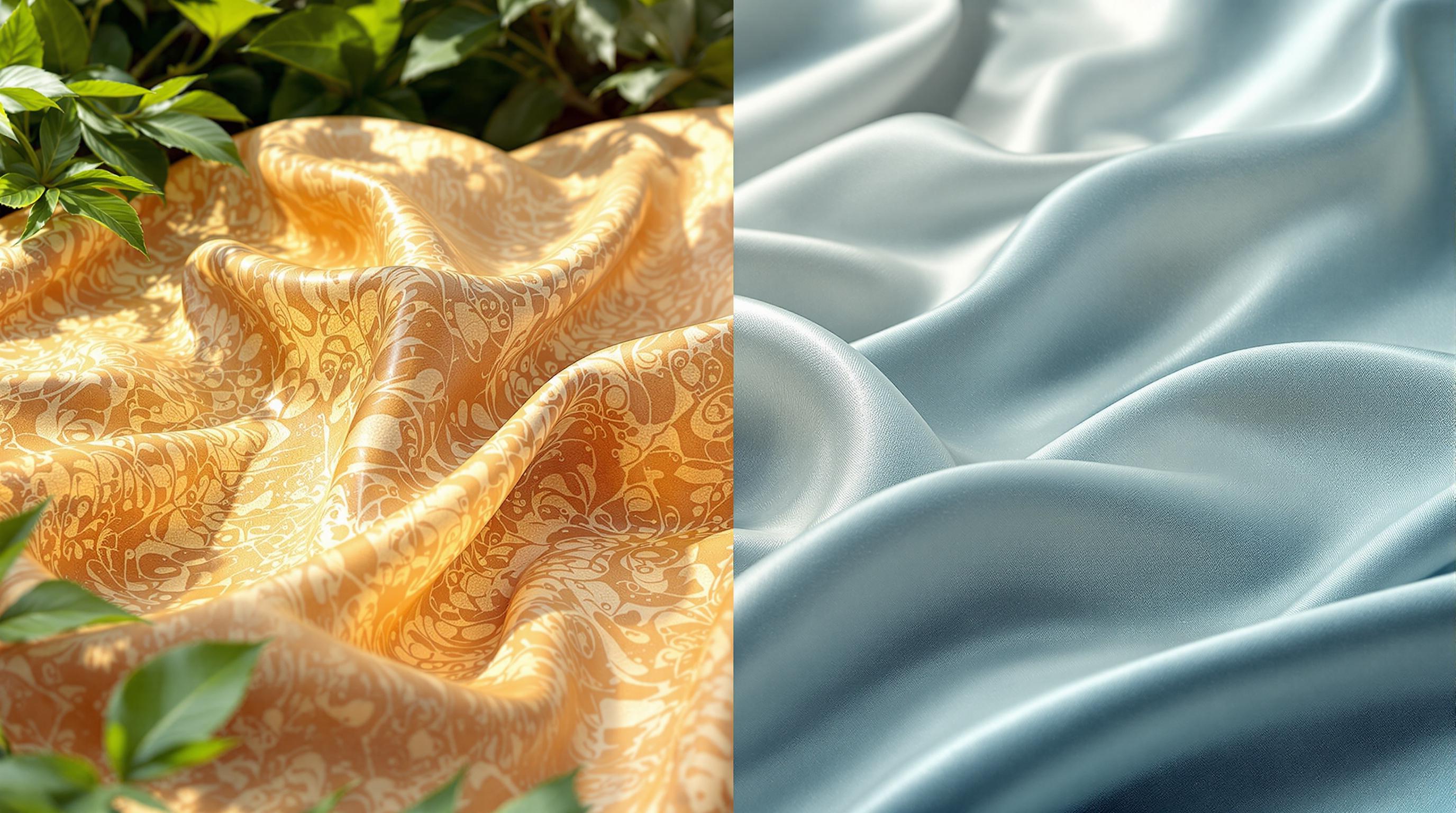PFAS-free oil repellents are changing surface protection by providing effective, safer, and eco-friendly alternatives. Here's what you need to know:
- What’s the problem with PFAS? PFAS are harmful "forever chemicals" that don't break down in the environment, raising health and ecological concerns.
- How do PFAS-free coatings work? They use nanotechnology or sol-gel systems to repel oil by altering surface energy, making oil bead up and roll off.
- Why switch to PFAS-free options? These coatings offer durable, non-toxic, and biodegradable protection while meeting strict environmental regulations.
- Where are they used? From textiles to automotive surfaces, PFAS-free coatings maintain breathability, durability, and oil resistance.
Quick Comparison Table
| Feature | PFAS-Free Coatings | PFAS-Based Coatings |
|---|---|---|
| Oil Repellency | High, using nanotech or sol-gel | High, but harmful to the environment |
| Durability | Long-lasting with proper care | Long-lasting but toxic |
| Eco-Friendliness | Biodegradable, non-toxic | Persistent, harmful chemicals |
| Applications | Textiles, automotive, construction | Similar, but less sustainable |
PFAS-free solutions are paving the way for safer, greener surface protection technologies.
PFAS-free Robust Liquid-repellent Surfaces from Reticular ...
How PFAS-Free Oil Repellents Work
Let’s dive into how PFAS-free oil repellents function and the science behind their ability to provide effective surface protection.
The Role of Surface Energy
Surface energy plays a key role in repelling oil. Materials with low surface energy naturally resist oil and other substances. PFAS-free technologies work by altering the material’s surface properties at a molecular level. These coatings use nanostructures to adjust the contact angle, making oil droplets bead up and roll off the surface.
By leveraging these principles, various technologies have been developed to achieve effective oil repellency without relying on PFAS.
PFAS-Free Methods in Use
Two main methods are leading the way in PFAS-free oil repellents:
- Nanotechnology-Based Solutions: These replicate patterns found in nature, creating nanoscale textures that repel both oil and water. They also maintain the breathability of materials.
- Sol-Gel Systems: This approach forms a durable molecular network that bonds directly to the surface, ensuring long-lasting protection while preserving the material’s natural characteristics.
These techniques highlight advancements in creating PFAS-free alternatives that still deliver reliable performance.
Performance and Practical Benefits
These PFAS-free coatings don’t just repel oil - they meet high performance standards. They are durable, maintain breathability, and provide non-toxic, biodegradable protection. For example, in automotive applications, these coatings create a lotus effect where water and dirt easily slide off. This reduces the need for harsh cleaning chemicals while offering excellent protection.
Main Types of PFAS-Free Coatings
Silicone and nanotech coatings highlight how modern PFAS-free solutions protect a wide range of surfaces effectively.
Silicone Coatings
Silicone-based coatings offer a PFAS-free way to protect surfaces. They create a molecular barrier that resists water and oil while maintaining the material's original properties. One standout feature is their ability to form a flexible, long-lasting layer that resists cracking or peeling. This makes them a great choice for applications where both durability and material integrity are crucial.
Nanotech Coatings
Nanotechnology-based coatings use tiny particles to create textured surfaces that repel oil and water. These coatings mimic the properties of naturally water-resistant materials, offering excellent performance. They also maintain material breathability, which is especially important for items like outdoor gear and protective clothing. The adaptability of these coatings makes them suitable for a wide range of uses, as detailed below.
Where to Use PFAS-Free Coatings
PFAS-free coatings are used across various industries to provide reliable surface protection. Here are some examples:
| Industry | Coating Type | Features & Uses |
|---|---|---|
| Textiles & Apparel | Nanotech | Keeps fabrics breathable, perfect for outdoor gear |
| Automotive Surfaces | Silicone/Nanotech | Creates a self-cleaning "Lotus Effect" |
| Construction Materials | Silicone | Shields stone and wood while allowing them to breathe |
| Glass & Windows | Nanotech | Improves clarity and reduces cleaning needs |
In textiles, these coatings maintain fabric functionality while offering long-lasting protection against water and oil-based contaminants.
When choosing a coating, think about the specific requirements of your application. For surfaces exposed to heavy use and needing strong oil resistance, nanotech coatings often perform best. On the other hand, silicone coatings are ideal when flexibility and durability are priorities.
sbb-itb-3ba7a4c
Testing and Longevity
Understanding how long PFAS-free coatings last is essential. Recent studies show that high-quality sol-gel-based PFAS-free coatings provide protection on par with traditional options.
Performance Test Results
| Test Parameter | Results for High-Quality PFAS-Free Coatings | Key Benefits |
|---|---|---|
| Oil Resistance | Comparable to traditional solutions | Protects surfaces without harmful chemicals |
| Water Repellency | Excellent, especially with sol-gel systems | Forms a strong barrier against moisture |
| Durability | Long-lasting protection | Reduces the need for frequent reapplications |
| Surface Adhesion | Strong, especially on textiles and hard surfaces | Keeps the coating effective during use |
These results highlight the durability of PFAS-free coatings, which can perform even better with proper preparation and care.
Tips for Extending Coating Durability
The lifespan of PFAS-free coatings depends heavily on how well they are applied and maintained. Here are some practical tips to ensure they last:
-
Surface Preparation
- Clean the surface thoroughly before applying the coating.
- Make sure the surface is completely dry.
- Remove any old coatings or contaminants.
-
Application Conditions
- Apply the coating in a controlled temperature environment.
- Follow the recommended curing times.
- Use application methods suited to the specific surface type.
-
Maintenance Practices
- Clean surfaces gently and regularly to prevent buildup.
- Avoid using harsh chemicals that could degrade the coating.
- Reapply the coating as necessary, depending on wear patterns.
Health and Safety Benefits
PFAS-free oil repellents not only protect surfaces but also help reduce potential health and environmental risks.
Less Chemical Build-up
PFAS-free repellents break down naturally, avoiding harmful chemical accumulation. Here are some key advantages:
- Safer Water Systems: Prevents harmful substances from seeping into water supplies.
- Cleaner Indoor Air: Reduces the use of harsh cleaners that release volatile compounds.
- Less Cleaning Needed: Lowers reliance on aggressive cleaning products.
Meeting Safety Rules
These oil repellents are designed to align with strict environmental and safety regulations, while also addressing modern sustainability goals.
| Safety Aspect | Benefit | Impact |
|---|---|---|
| Environmental Compliance | Adheres to restrictions on harmful chemicals | Lowers regulatory risks |
| Biodegradability | Breaks down naturally after use | Reduces long-term environmental effects |
| Non-toxic Formula | Safe for human contact | Improves workplace and user safety |
| Sustainable Production | Made using eco-friendly methods | Helps cut down the carbon footprint |
Recent developments have improved both durability and safety, while biodegradable components ensure better environmental protection.
Conclusion
Main Points
PFAS-free oil repellents are transforming surface protection by leveraging nanotechnology. These advanced coatings repel both oil and water while maintaining durability and eco-consciousness.
| Aspect | Achievement | Impact |
|---|---|---|
| Performance | Sol-gel systems matching older solutions | Long-lasting protection |
| Environmental Impact | Biodegradable, non-toxic formulations | Lower ecological footprint |
| Versatility | Usable in textiles, automotive, and more | Broad practical applications |
| Safety Compliance | Adheres to current regulatory standards | Prepared for future policies |
These milestones highlight the progress made and set the foundation for further advancements.
Next Steps in Development
Future innovations will focus on improving both durability and environmental responsibility. With stricter PFAS regulations as a driving force, researchers are creating coatings that combine long-lasting effectiveness with eco-friendly properties. Advances in nanotechnology are making surface protection even more efficient.
The growing demand for sustainable solutions is fueling these developments, ensuring that future products meet high-performance standards while adhering to environmental guidelines. This progress reflects the broader movement toward greener, high-performing surface technologies and reinforces the commitment to PFAS-free alternatives.


